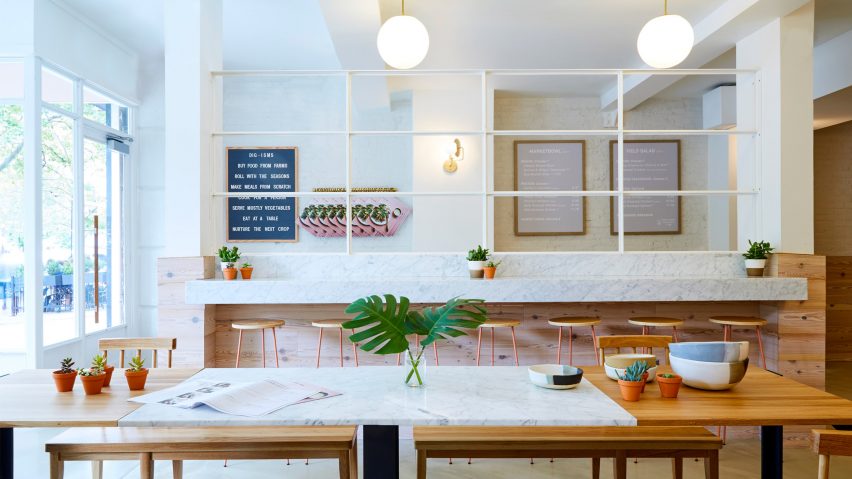
ASH NYC adds pops of pink to Dig Inn Boston restaurant
Pink accents contrast the pale palette that US firm ASH NYC has used for the interior of this farm-to-counter restaurant in Boston.
Dig Inn, which has 11 locations in Manhattan, asked ASH NYC to design the space for its first venture outside New York.
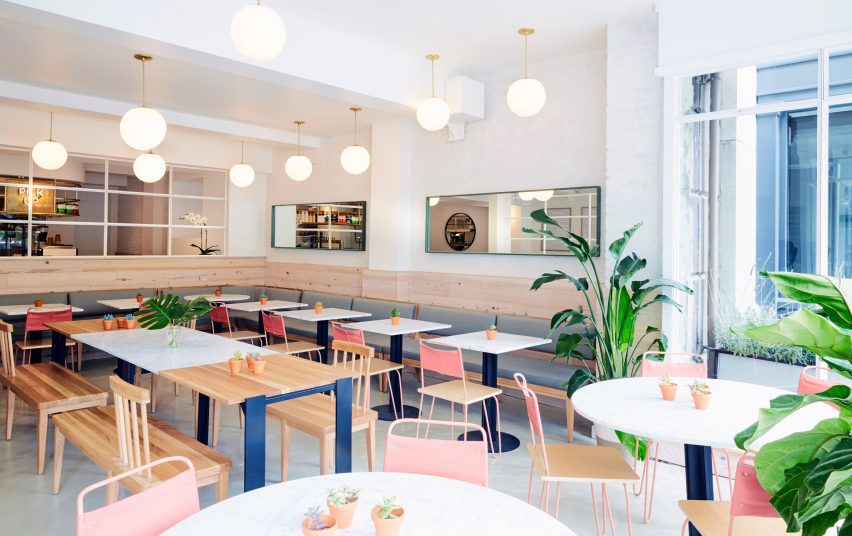
The restaurant opened last summer on Boylston Street in Boston's Back Bay neighbourhood, and follows the same ethos of sourcing ingredients locally.
At 3,000 square feet (279 square metres), this outpost is the chain's largest. It accommodates indoor and outdoor dining for breakfast, lunch and dinner.
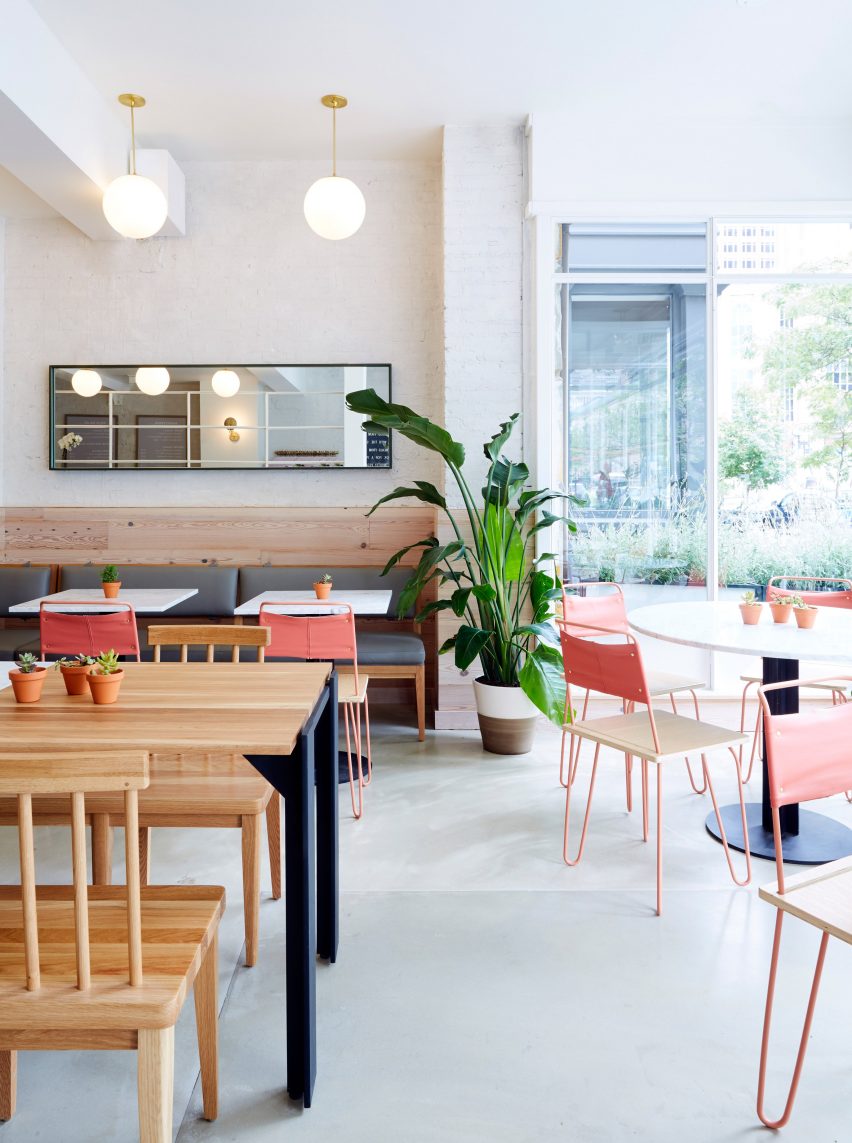
ASH NYC used a variety of materials across the interior. A wainscot of bleached heart pine runs around the lower portion of the walls, below white-painted brickwork and above the concrete floor.
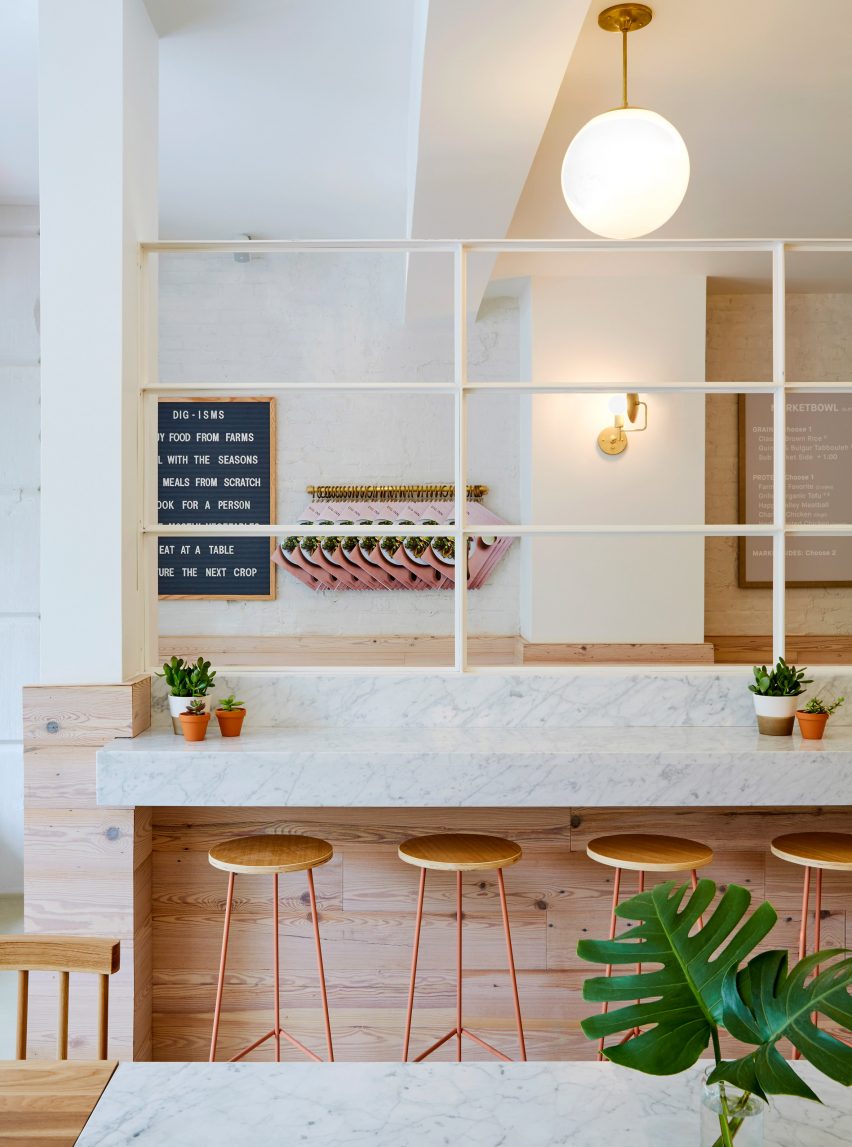
"The colour palette features peachy-pink furniture – custom-made by ASH – accompanied with warm grey, natural oak, steel, and white marble to tie the space aesthetic together," said a statement from Dig Inn.
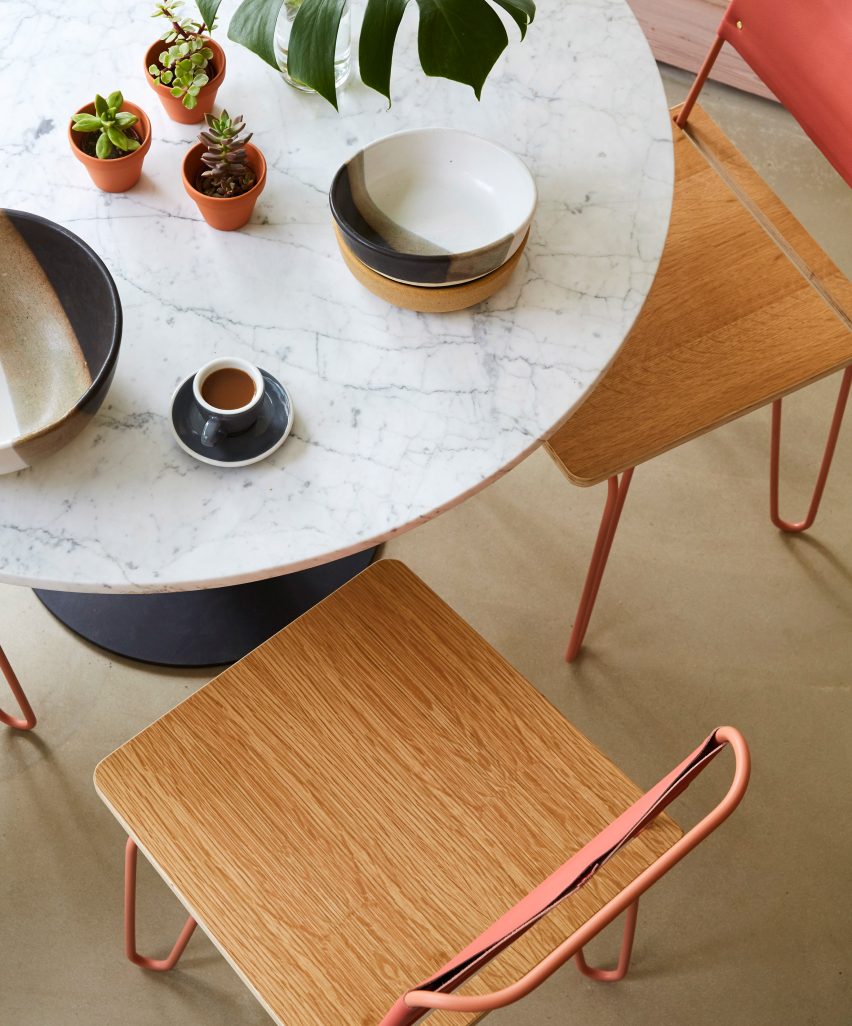
The studio's bespoke furniture for the space includes built-in banquettes upholstered in grey leather, and a range of freestanding pieces.
Pink was chosen for powder-coated metal frames that support white oak chairs and stools, as well as leather seat backs.
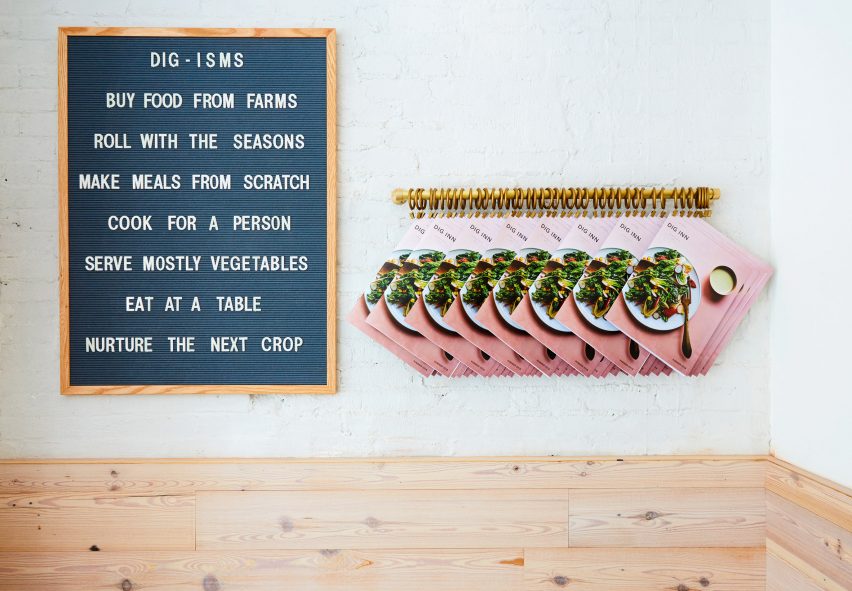
The colour also matches the menus, which are stored on brass clips along a rail beside the entrance.
Pink has become a popular choice for restaurant and bar interiors recently, with examples including Universal Design Studio's Odette in Singapore, Tom Dixon's Bronte in London and Biasol's Grind & Co, also in the UK capital.
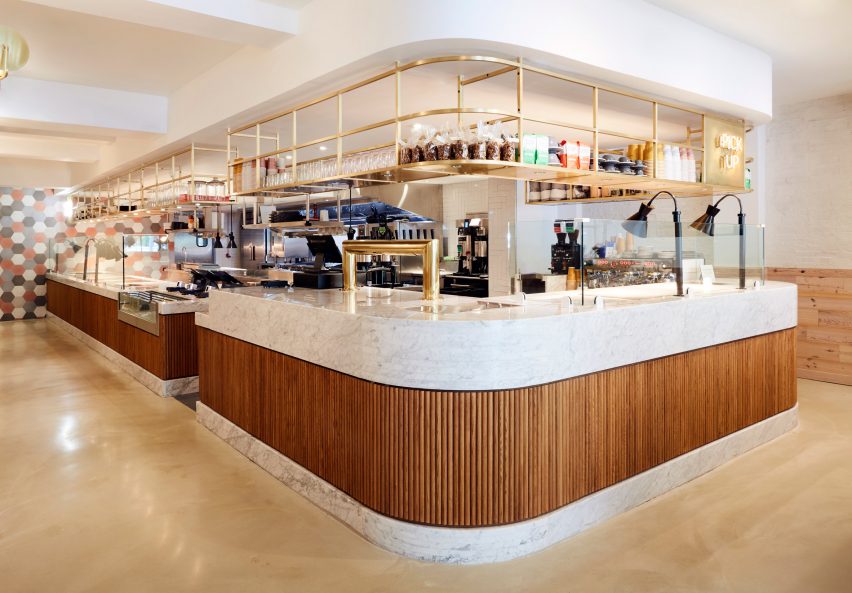
The trend also reaches beyond the hospitality sector, as seen in 10 of the most popular pink-hued interiors on Dezeen's Pinterest boards.
At Dig Inn Boston, tabletops alternate between wood and Carrera marble, which is also used for dining counters and the service area.
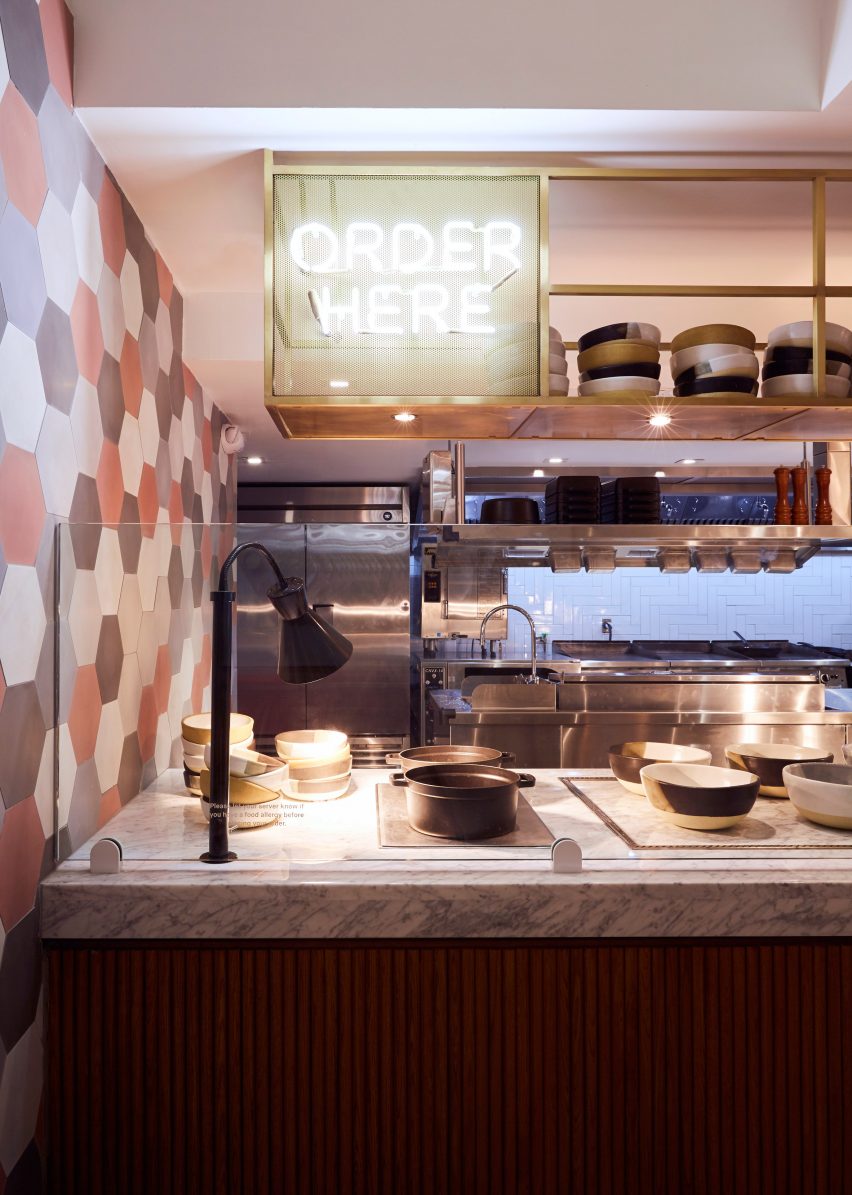
The wall at the end of the service station is covered in hexagonal tiles, coloured to pick out the hues elsewhere in the interior.
Light floods in through steel-framed windows across the frontage, while orb-shaped ceiling lamps help to illuminate the space further back.
Photography is by Christian Harder.